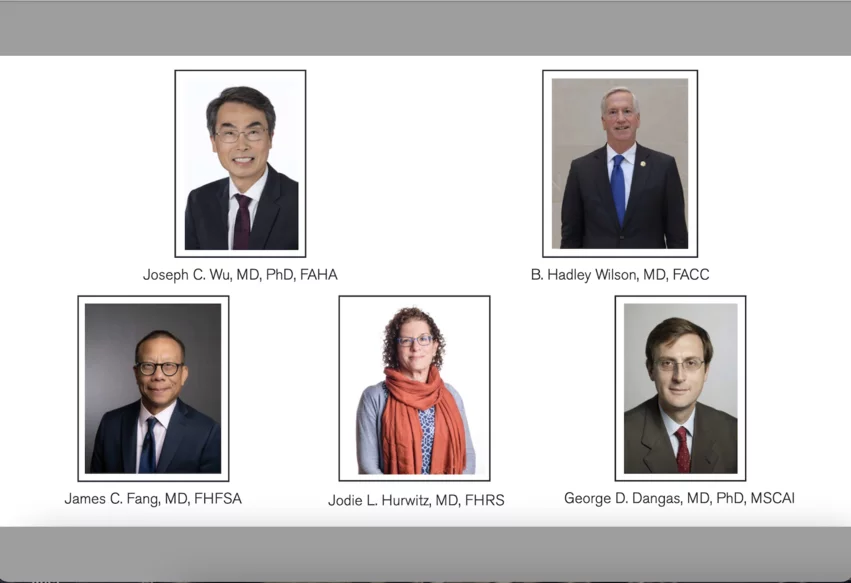Cardiology groups want to ‘transform the future of cardiovascular medicine’ with new medical board
Five of the biggest cardiovascular health organizations in the United States joined forces in 2023 to propose the creation of a brand new medical board that would be completely independent of the American Board of Internal Medicine (ABIM). Now, the leaders of those groups have shared a mission statement of sorts for the proposed board, highlighting the potential impact such a significant shift could have on patient care.[1]
The American Heart Association (AHA), American College of Cardiology (ACC), Heart Failure Society of America (HFSA), Heart Rhythm Society (HRS) and Society for Cardiovascular Angiography & Interventions (SCAI) are the groups involved with this paradigm-shifting proposal. AHA President Joseph C. Wu, MD, PhD; ACC President B. Hadley Wilson, MD; HFSA President James C. Fang, MD; HRS President Jodie L. Hurwitz, MD; and SCAI President George D. Dangas, MD, PhD, co-authored the document.
“Since its inception in 1941, the ABIM has been tasked with evaluating and certifying cardiologists to ensure they meet specific education and training standards,” the groups wrote. “While this arrangement initially made sense, the field of cardiovascular medicine has evolved significantly over the last few decades, establishing itself as a distinct medical specialty with unique care pathways, knowledge base, patient-focused guidelines, specialized training, expected competencies and its own derivative subspecialties, separate and distinct from internal medicine.”
With this evolution in mind, the groups decided to take matters in their own hands. The leaders emphasized that this new independent entity, if approved, would prioritize “supportive learning” over “episodic testing” and “provide a collaborative approach to assessments.” In addition, they wrote, the new Board of Cardiovascular Medicine would put patients at the center of every decision while respecting the “time, cost and administrative burden” associated with providing care at a high level.
One key takeaway from the joint statement is that the five groups want to improve the current recertification process by putting less of an emphasis on “one-time, high-stakes assessments.”
“These assessments are perceived as punitive and less effective in promoting lifelong learning and practical skill development,” the groups wrote. “Increasing clinician frustrations with these assessments highlight the limitations of a system emphasizing passing test scores in favor of sustained personalized learning to support closing knowledge gaps and improving skills.”
The five leaders explained that they want to test “the full hierarchy of competence” in a way that goes beyond asking clinicians to take a standardized test. Hands-on demonstrations, virtual simulations, augmented reality and peer-to-peer problem-solving activities are just some of the evaluation techniques listed in the joint statement. They also said their new board, if approved, would spend more time considering “nonclinical competencies” such as diversity, inclusion, health equity, professionalism and leadership.
When will the group know if its proposal has been approved? An answer could still be many months away, they wrote. In the meantime, they recommended that all physicians currently participating in the ABIM’s maintenance of certification program proceed as if nothing has changed.
“At the end of the day, achieving and maintaining proficiency in clinical cardiovascular knowledge and skills are essential for delivering suitable and valuable healthcare, constituting a core aspect of our ethical and professional obligations to our patients,” the groups wrote, adding that “now is the opportune time for the ‘house of cardiology’ to unite and transform the future of cardiovascular medicine.”
Click here to read the full statement in the Journal of the American College of Cardiology. The text was simultaneously published in Heart Rhythm, the Journal of Cardiac Failure, the Journal of the Society for Cardiovascular Angiography and Interventions and Circulation.
For additional context, click here for an interview Wilson did with Cardiovascular Business about this topic in September 2023.


